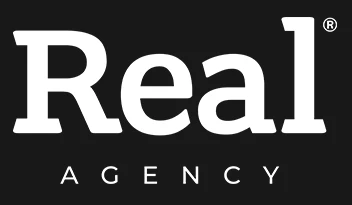How To Drive Traffic and Conversions By Writing Decent Meta Descriptions
We get it, you’re working hard to market your company. You’re busy writing product descriptions, optimising all of your images, and mastering most of the other elements of effective SEO.
But if you are like the majority of other business owners there is still one aspect of SEO that could be giving you the major trouble: meta descriptions.
What Is A Meta Description?
In simple form, a meta description is a summary of up to 320 characters in length that will describe the content of a web page. Search engines show it in search results when the meta description also includes the keywords being searched. Meta descriptions entice users to click through to a page and are an essential part of effective SEO.
When you type in a search query into Google, for example, let’s use the term “World Cup” you’re led to a search engine results page which is otherwise known as a SERP.
This page is very busy and looks a bit complicated, but for now, we will ignore all the ads, images, league tables, and news in favour of the more traditional and organic results.
The blue words at the top are known as the ‘Title Tags’ and these are the title of the web page you will be directed too if you were to click them. Below, you will see a description of no more than 320 characters which is the ‘meta description’.
Dissecting A Home Page Meta Description
Reading other people’s meta descriptions will make the process appear very simple, however, that simplicity is the very thing that makes them so difficult to actually write yourself. The 320 character limit means the meta description has to be shorter than if you were going to write a tweet. Good descriptions give you a brief overview of what the site you will be directed to is actually all about, as well as a compelling reason to click the title tag. It all happens so quickly and painlessly, many searchers won’t even notice themselves making a decision.
Here is a great example of what meta description should look like:
Let’s say you didn’t already know about one of the biggest shoe brands in the world for a second. Just by looking at the first four words of their title you already know what they are, a shoe distributor. Using the word ‘Official’ automatically positions itself as a trustworthy brand.
It then goes onto list off some of the items the brand sells starting with ‘Shoes, clothing & accessories’ this gives the visitor a brief rundown of what kind of items they are likely to find. The description is then broken down into Mens, Womens and Kids, which tells the reader that they cater to both genders and all ages.
So, after just a brief skim of the Meta Description and Title tag you will get a feel of what the company is, what they sell and to who all in the space of around 25 words.
Now that’s good copywriting!
Dissecting A Product Page Meta Description.
Writing meta descriptions for your product pages is somewhat easier than writing them for your home page, this is due to the fact that your product pages aren’t supposed to speak for your business as a whole.
Instead, they’re speaking for something that offers a tangible benefit to the shoppers who visit your site.
- Selling cooking equipment? Let the reader know why your products will make cooking easier for them.
- Selling garden furniture? Have the reader imagine how much faster and more efficient gardening will be if they were to purchase items from you.
Immediately, the description in the example above lets you know what the event is, when it is, where it is and that it’s going to the 50th anniversary of the event. All of these attributes are what the visitor for the website will want to know.
Though some SEO experts will tell you to make sure your meta descriptions all finish with complete sentences, saying that, half sentences can do wonders for your click-through rate, Especially in this case. When thinking of going to a festival you are going to want to know who the headlining acts are, so what has happened here is that they’ve left you on a complete cliffhanger by not quite revealing who their headline act is without clicking through to the site. Could have been done on purpose or maybe it’s just a happy accident. Either way, it’s bound to get more clicks through.
How To Write A Meta Description.
Now that we have an understanding of what meta descriptions are, you’re probably wondering, what are the best ways to apply this knowledge to your actual business? Firstly, you need to focus on what is going to compel a searcher to click on your title tag. This requires answering these following questions:
- What services or products are you offering?
- Why should I even buy from you?
For product pages, the very first query has a simple response: you’re offering your product. The second will be resolved by the simple fact that you’re the one selling the product.
Meta descriptions for your home page are somewhat trickier. The best thing to do here is to repeatedly emphasize your brand. That’s the one thing your whole store offers and it’s the reason they should be buying from you in the first place.
Inform your readers what you do straight from the off, tell them about your unique selling proposition, and convey this information multiple times, because the meta description isn’t really a place for being super subtle. If you are struggling to come up with an effective meta description for your homepage then don’t worry as its very common. The best thing to do here is to be patient and think hard about what your brand is and what it ultimately represents.
Brainstorm with people about your business, formulate the description like you would any kind of elevator pitch. You will probably want to go through a couple of drafts first as it’s important to get things right, as this may be the first exposure many customers have with you and your brand.
When Do You Write Your Meta Description?
Now, this article isn’t going to claim you should get a move on and ensure all of your pages have meta descriptions. Google will actually automatically create these descriptions for you by pulling through content from your page anyway, and that process lends more flexibility that a copywriter can manage. Optimizing a page for one keyword is hard but it’s totally worth it. When people land on a page via a variety of search terms, it becomes too difficult to optimize properly.
Also, for businesses with a lot of pages and I’m talking hundreds, if not thousands here, going back and writing meta descriptions for every single one would be a rather laborious task, right?
Instead, it’s probably best to focus on the pages that get the most traffic from search engines. Take your top ten or twenty pages and ask yourself “Are we really selling the product here, or is there a way we can improve the click-through rate?”
Moving forward, whenever you or a writer you may have hired settles on a new page of content, it’s a good idea to have them write a meta description in the resource’s details page of the sites admin. Not only will this improve your overall SEO, it will also force you to condense the idea of the page into just a few words.
This then becomes the topic sentence for the page, essentially, and it helps you determine whether the page’s copy continually fulfils the promise of the meta description.
Meta Descriptions Are Your Best Salespeople.
Ultimately, the meta description is essentially a promise you make to searchers. Among a crowded sea of other competing web pages, it calls out to them and says “This is the page you’re looking for.”
When writing your meta descriptions, make sure to remember the three key things we talked about in this article.
1 – Your Description Can’t Be More Than 320 Characters.
It’s okay to write a meta description that cuts off halfway through the sentence. Just make sure you know you’re doing it.
2 – Focus On The Customer.
The descriptions for your product pages should focus on how this product could make your customers lives better. The home page description should sell the way your brand matches the customer’s wants and needs.
3 – Repeat, Repeat, Repeat.
You don’t have much time to make an impression. Once you’ve found the message you would like to convey, make sure every phrase and word choice conveys the message.
Hopefully, this article has helped you understand the art of writing meta descriptions. Once you have applied these tips to your own site, you can hopefully finally say goodbye to those low click-through rates once and for all.





